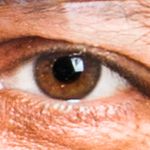- Home
- Stock Contributors
- Discussions
- Should the image be uploaded at 300 DPI in AI gene...
- Should the image be uploaded at 300 DPI in AI gene...
Should the image be uploaded at 300 DPI in AI generative content?
Copy link to clipboard
Copied
When I create an image with AI, the DPI is either 96 or 72. However, I notice that some images have a DPI of 300. Is this important only for printing, or should I always upload the image at 300 DPI?
Copy link to clipboard
Copied
Regardless of what dpi you use, the file has to be a minimum of 4MP in size. A 96 or 72 dpi image will not meet that criteria, so it will need to be enlarged. I only upload AI and I do so at 300 dpi (approximately 24"x13.5"). One way or another, you will have to use a decent upscaler. I uploaded a 36"x36" image at 72 dpi successfully. If I were to purchase that image and I needed a 300 dpi version of it, it would be a little larger than 8"x8". I'm not sure myself if the image is converted to 300 dpi during the upload process. Someone else might be able to answer that.
Forum Volunteer | One thing I've learned from these forums is how to spell algorithm.
Copy link to clipboard
Copied
Thank you, Danielley. I am currently upgrading the quality of the AI-generated image. Regarding the image size, it doesn’t necessarily have to be 4 megapixels.
I am only asking about the DPI, which is usually more important for people who purchase images for printing. For digital use, I believe 72 DPI is sufficient and won't make any difference, but I am waiting for more feedback on this topic.
Copy link to clipboard
Copied
You do not understand the use of the DPI (correctly: PPI) value.
If you work in photography or in image creation, the value that counts is the image resolution. The same image with the same resolution and quality can be used in 72 ppi or in 300 ppi. Your resolution should always be the highest possible resolution. However, if you work in generative AI, you are probably upscaling your assets to meet the 4 M pixels minimal size. Upscaling should be done in such a way, that it won't affect image quality, so you can't simply upscale to an abundantly high resolution.
Set the ppi value always to 300 (240 at least). Even if it is not important for your image and quality, some programs, like InDesign use that parameter to generate the preview image, and setting the PPI to a lower value creates higher resolution previews and those take up more space and are more memory intensive to handle. But as said, this does not have an influence on the quality of your work.
And to answer @daniellei4510 's question: files are uploaded to stock with no modifications whatever. What is contained in your file will be also in the stock asset. The only change Adobe makes is to rename the asset.
(I will move this thread to the contributor forum.)
Copy link to clipboard
Copied
Oh do they rename the file?
Copy link to clipboard
Copied
They don't rename it...well, they do...but it's a number, which is displayed on the bottom left-hand side as it appears on the Adobe Stock site. Your original file name has nothing to do with respect to searches.
Forum Volunteer | One thing I've learned from these forums is how to spell algorithm.
Copy link to clipboard
Copied
Hello,
Just to clarify - DPI = Dots Per Inch. which refers to printing - how many dots there are in a square inch.
PPI - Pixels Per Inch = how many pixels there are in an image.
These values become more relevant when printing.
Pixels Per Inch & Pixel Density | What is PPI Resolution? | Adobe
Copy link to clipboard
Copied
Raster images are resolution-dependent (height x width in pixels). Use the highest resolution that your AI service offers. In most cases, you'll need a paid plan to access more advanced features. Don't worry about PPI. It's baked in to your resolution by default.

High-res rasters ≥ 4800 x 3600 pixels contain more, small-sized pixels per inch. This provides greater details. Low-res images ≤ 2000 x 1083 contain fewer, large-sized pixels per inch which can augment fuzziness or images that look pixelated.
When shopping for Stock images, I always opt for the highest resolution possible. If I need a smaller image later, I can always downsize it in Photoshop. However, the reverse isn't always possible.
Enter math-based vector graphics. Vectors are resolution-independent. Vectors are made up of paths, such as lines, squares, or shapes. Because they are not made of pixels, vector graphics can be scaled up or down without quality loss. But you should designate a PPI that's commensurate with how the vector graphic will be used.
PPI for Vectors:
-
72-96 PPI: This is common for on-screen projects, but it might not look as crisp on newer high-density/Retina displays. Think small computer icons.
-
150 PPI: This is the recommended value for most digital & web use now.
- 300 PPI: This is a good option for printed materials. It's also the standard DPI for a high-quality print finish.
Hope that helps.
Find more inspiration, events, and resources on the new Adobe Community
Explore Now


